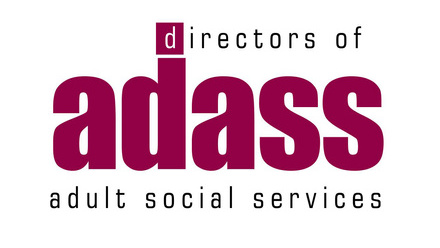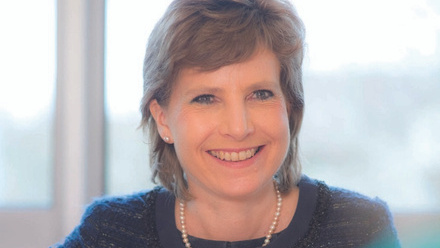It’s not bulk-buying printer paper, it’s a value-enhancing digital care journey
Guest blog by Robin Batchelor, Chairman & CEO, everyLIFE Technologies
I was recently invited to become a supplier to a large care provider in return for “sharpening my pencil” and “giving them the best possible price”. While the desire for a “good deal” in an industry struggling against rising costs and static fees is understandable, this conversation reinforced the need to change the narrative and demonstrate to care providers why choosing software should not be approached in the same way as bulk-buying printer paper. Instead, it should be managed in partnership with the supplier as your first step on a value-enhancing digital care journey that benefits both care providers and care receivers.

Moving from paper-based care provision to digital care planning or using any form of operational software is a significant business change and the options may at first appear overwhelming. Terminology such as “on-premise”, “the cloud”, “software as a service”, “internet of things” and “machine learning” are light years away from the daily vocabulary of care, but understanding these differences may well, I believe, determine the long-term success of a care business. Choosing software that will help run your business efficiently, manages risk more effectively, demonstrate accountability and deliver higher quality care is not the same as just buying printer paper and needs a very different approach.
The first decision a care provider has to make is to move away from the comfort zone that is paper care records. Inertia is often the biggest factor holding care providers back from this crucial step, but without taking it the long-term benefits of “going digital” will pass you, and more importantly those you care for, by. They deserve better.

Once this decision is taken and your digital journey has begun, the next question is whether to build your own system or buy from a software provider. For many, the idea of hiring software engineers or contracting an “app developer” to build a bespoke system is not even entertained, but for some this looks like the Promised Land; “we can build exactly what we need” is something we sometimes hear. “We know what we want, have an IT budget, how hard can it be?” The answer is, much harder and much more expensive than you can imagine, and the cost will never end; the new NHS App has cost £6.5m to date and it’s currently quite limited in scope. With ever growing customer expectations, technological advances and regulatory changes (thank you GDPR!) no software can be left static. To take this burden of both up-front investment and ongoing continuous improvement in-house, onto your own shoulders is a decision that should not be taken lightly but often is. For a professional software partner, these same ongoing costs are spread over a broad, fee-paying customer base, supported by a large full-time team of privacy and software professionals and are all the more manageable and affordable as a result.
This is also where the distinction between “on-premise” and “cloud-based, software as a service” becomes vitally important. In the old days (circa 1990s, but, unbelievably I recently heard of a council implementing a new roster system this way), software was sold as an up-front cost to a company, on a disc that was uploaded onto the company’s own server sited somewhere in their building and managed by a nominated company IT individual or team. This is on-premise, where the responsibility for running, maintaining and upgrading the system (or not as the case may often be) falls upon the purchaser.
Alternatively, the cloud is a modern way of storing and retrieving data and software over the internet and has replaced on-premise software in most environments. The UK Government has been encouraging the use of the cloud since 2016 and aims to become “Cloud Native” (“not just about considering cloud before other options, but about adapting how we organise our work to really take advantage of what’s on offer and what’s emerging”). Yet the cloud is sometimes misunderstood by care providers who see having paper in their filing cabinet or an on-premise software solution as “keeping it within their control” and therefore “safer” than the cloud.

As well as the benefit of a pay-as-you-go model, modern Software as a Service via the cloud shifts a lot of the burden of ongoing data security onto the software provider rather than leaving it with you.
As the Government says, “using a browser to consume data means there is less information stored on devices. Product upgrades and security patches are constantly applied. Many cloud services provide excellent methods for the audit and control of resources supporting information assurance. The size and expertise in security teams of cloud providers makes for high levels of assurance of data security”. With the full implications of GDPR becoming more evident by the day, passing some of the ongoing burden to external professionals makes business sense.
Because modern software delivered via the cloud is perfectly suited to ongoing improvements, I refer to moving from paper-based notes as starting a journey that will continuously help providers deliver top quality care efficiently. Once you have “gone digital”, the first step a care provider will experience is somewhat akin to the digitisation of their prior paper processes using an app and a desktop programme. This is a positive step in itself, but it is only the first step on their journey (https://www.scie.org.uk/news/mediareleases/everylife-passsystem-scie-evaluation).
Once having gone digital you now have a platform to gain ever more insight, in real or near-real time, into both the care you are providing and how your business is operating. Much like the progression from the analogue rotary-dial telephone to today’s app-loaded smartphones, a new world of ever-developing care-related possibilities becomes available once “going digital” has been embraced; real-time alerts, dashboards and reporting, non-location dependent family inclusion, additional care receiver monitoring and understanding via cloud connected devices (the Internet of Things), predictive analytics to help warn of possible incidents and guide prevention of falls and infections (using factor analysis and machine learning), transferable real time person centred data packages between care settings.
These “digital tools”, and more that are in development, are available to help you provide good care. Using the best tools will become the norm for successful care providers and over time, will become expected by insurers, finance providers, regulators, the NHS and more importantly, care receivers and their families. It’s time to start your digital care journey.







